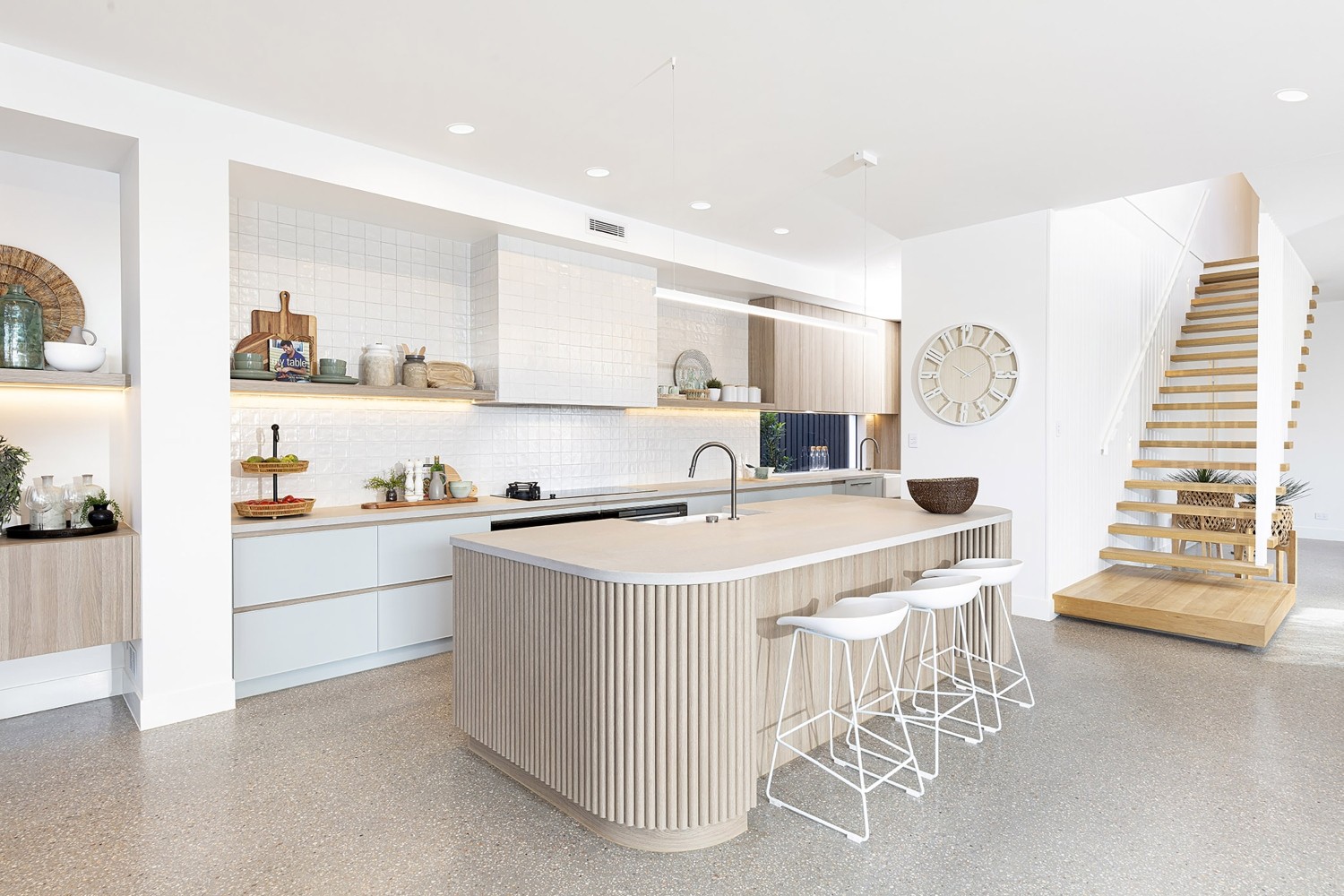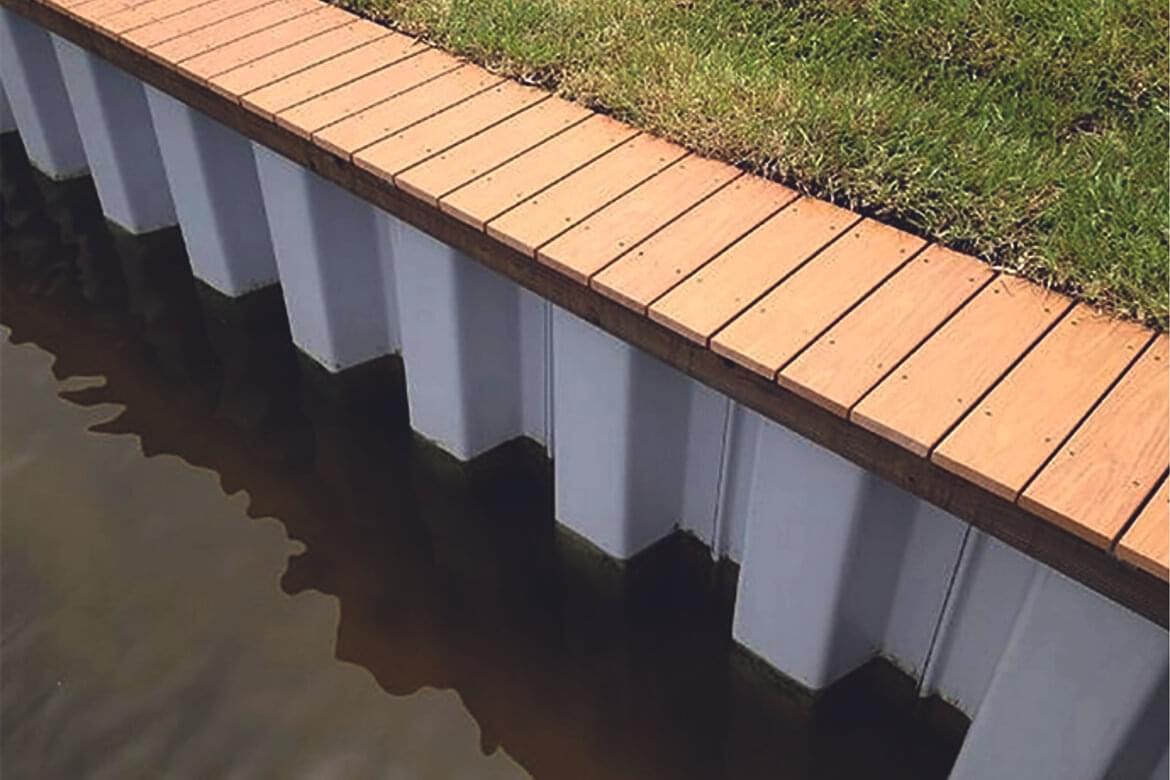Exploring the Different Uses Bulkhead Frameworks in Modern Design
Bulkhead structures play a considerable function in modern design, serving both functional and visual functions. They can specify rooms, enhance storage remedies, and improve lighting. In commercial setups, they serve as prime focus that show brand identification - Bulkhead on Lake Livingston. In addition, their integration typically sustains audio monitoring and lasting methods. Recognizing the complete extent of their applications reveals much about contemporary design patterns and user experience. What innovative uses of bulkheads might emerge in the future?
Specifying Bulkhead Structures
Bulkhead frameworks play a vital duty in modern-day design, functioning as necessary parts in various structure layouts. These frameworks are typically specified as raised ceilings or platforms, usually used to hide mechanical systems, wiring, or plumbing. Bulkheads can be located in both business and household setups, where they give a smooth blend of capability and aesthetics. Their layout can incorporate lights fixtures and other ornamental aspects, improving the overall visual charm of a room.
Generally built from products such as wood, drywall, or steel, bulkheads can be customized to fit the architectural design and needs of the building (Bulkhead on Lake Livingston). They serve not only to hide unsightly facilities yet additionally to produce defined zones within open rooms. By taking care of the circulation of a room, bulkheads add to the spatial company, making them a significant aspect of contemporary building practice. As a result, their definition envelops both sensible and aesthetic measurements
Practical Applications in Residential Design
Bulkhead frameworks play a necessary function in household style by facilitating room optimization techniques that take full advantage of functional areas. They add visual style components that boost the aesthetic appeal of living spaces. On top of that, these frameworks offer vital structural assistance services, ensuring the integrity and safety of the home.
Space Optimization Methods
As contemporary property layouts increasingly prioritize reliable use of room, innovative approaches emerge to make best use of capability without giving up aesthetic appeals. One noticeable method entails the combination of bulkhead frameworks, which can define locations while giving essential storage remedies. These structures can be utilized to produce vertical storage space devices that boost both company and availability. Additionally, multi-functional furnishings, such as collapsible tables and convertible sofas, complements bulkhead layouts, enabling areas to adjust to differing demands. Open flooring strategies additionally enhance spatial circulation, encouraging versatility being used. Integrating built-in shelving and recessed lighting within bulkheads likewise adds to a streamlined atmosphere, making sure that every square inch of room is utilized properly and harmoniously within the general design.
Aesthetic Design Aspects

Architectural Support Solutions
In modern domestic style, an efficient structural assistance solution is crucial for preserving the honesty of spaces while optimizing format and capability. Bulkhead structures play a substantial duty in this circumstance, offering as both support and dividing elements. They can conceal mechanical systems, such as pipes and electrical wiring, while giving support to the ceiling and flooring systems. By tactically placing bulkheads, architects can produce defined areas within open layout, boosting usability without compromising structural security. In addition, these structures can suit lighting fixtures, adding to both visual appeals and functionality. To sum up, bulkhead frameworks are important in property layout, offering versatile assistance services that enhance both the functionality and visual charm of living areas.
Enhancing Looks in Commercial Rooms
When business spaces embrace innovative bulkhead frameworks, they not only specify physical limits yet likewise considerably enhance the overall appearances of the setting. These architectural elements work as visual focal factors, attracting focus and producing a sense of intrigue. By incorporating varied products such as metal, wood, or glass, bulkheads can mirror a brand name's identification and mission, adding to a natural style.
Additionally, the critical placement of bulkheads can manipulate light and darkness, including depth and dimension to otherwise level rooms. This interaction can transform a commercial location right into an inviting atmosphere, urging client involvement. In addition, making use of shade and texture in bulkhead layout can evoke particular feelings, improving the overall client experience. Ultimately, the thoughtful assimilation of bulkhead structures boosts the aesthetic appeal of business rooms, making them not only practical however likewise visually captivating, thus cultivating an enduring impression on visitors.
Acoustic Performance and Noise Management
Efficient acoustic performance plays a crucial role in modern design, particularly within business areas where audio administration is critical. Bulkhead structures can greatly improve acoustic high qualities by absorbing noise, lowering reverberation, and mitigating sound transfer between locations. These features are specifically advantageous in atmospheres such as dining establishments, workplaces, and theaters, where clear communication and a pleasant acoustic experience are extremely important.
The strategic placement and layout of bulkheads can aid develop sound-buffer zones, effectively isolating loud areas from quieter ones. Materials utilized in bulkhead building, such as acoustic panels and soft surfaces, add to their sound-dampening capacities. Furthermore, the unification of bulkheads permits the integration of sound-absorbing components without compromising aesthetic charm. By dealing with acoustic performance, architects can develop unified environments that boost comfort, enhance customer experience, and promote productivity, making bulkheads a vital element in the design of modern industrial spaces.
Incorporating Bulkheads for Effective Room Utilization
Commonly neglected, the integration of bulkheads in architectural style can substantially improve area application in modern-day buildings. These architectural elements offer multiple functional functions, supplying a way to conceal mechanical systems, electric wiring, and pipes without jeopardizing looks. By strategically positioning bulkheads, designers can develop specified locations within open flooring plans, thereby helping with far better company and circulation.
Bulkheads can include storage remedies and illumination functions, maximizing the performance of or else thrown away vertical space. In domestic setups, they might define areas such as cooking areas or living locations, while in commercial rooms, they can enhance the efficiency of layouts by plainly marking pathways and workspace.
Inevitably, the thoughtful assimilation of bulkheads adds to an extra visually attractive and well organized setting, permitting versatile areas that can advance with the demands of their owners. This method not just optimizes room but also promotes a much more unified communication in between kind and feature.
Bulkheads in Public Style

Architectural Aesthetic Enhancements
While numerous building components aim for functionality, bulkheads in public architecture offer a twin function by boosting aesthetic appeal. These frameworks commonly develop visual passion via their style, incorporating seamlessly with surrounding components. By utilizing various products, textures, and colors, bulkheads can add to an unique identification for public rooms, such as airports, galleries, and collections. Their tactical placement aids to define locations, assisting site visitors while including deepness to the overall style. Additionally, bulkheads can highlight lighting, creating dynamic ambiences that alter throughout the day. This visual improvement not only boosts the visitor experience however additionally promotes a local color, making bulkheads an essential factor to consider in contemporary public design. Overall, bulkheads symbolize the fusion of type and feature.

Architectural Assistance Solutions
As designers look for innovative ways to improve the architectural honesty of public rooms, bulkheads arise as necessary components in the style and building procedure. These structures offer crucial support, especially in locations subject to hefty foot website traffic or vibrant lots. By dispersing weight equally, bulkheads help prevent architectural failing while permitting for functional style alternatives. In large locations, such as stadiums and convention facilities, bulkheads are usually incorporated into the overall architectural framework, guaranteeing stability and safety and security. In addition, they can facilitate the incorporation of energies and mechanical systems, adding to the performance of room usage. Eventually, bulkheads stand for an essential solution in contemporary public style, reinforcing both capability and safety and security in community-focused environments.
Environmental Management Procedures
Integrating environmental click now protection measures into public design has come to be significantly important as urban designers prioritize sustainability alongside architectural support. Bulkhead frameworks serve a twin function in this respect, functioning as obstacles versus disintegration and flooding while all at once enhancing the aesthetic allure of city landscapes. Their style commonly consists of natural environments such as vegetation, which can boost air quality and supply habitats for wild animals. In addition, bulkheads can be crafted with absorptive materials that permit water absorption, decreasing this hyperlink drainage and promoting groundwater recharge. This integration of environmental considerations not just protects the environment however additionally fosters neighborhood durability versus environment change. By utilizing bulkheads properly, architects add to lasting urban growth that straightens with modern environmental objectives.
Future Trends in Bulkhead Style
Arising fads in bulkhead design show a growing emphasis on sustainability, technology, and performance in modern-day design. Developers are increasingly integrating green materials, such as recycled compounds and bioplastics, to decrease environmental effect. Additionally, the combination of wise technology is becoming prevalent, allowing bulkheads to offer multi-functional functions, consisting of energy storage space and climate control.
In city setups, modular bulkhead systems are obtaining grip, providing flexibility in style and convenience of installation. These systems can be adapted to numerous landscapes, enabling for efficient area usage. Furthermore, visual considerations are progressing; bulkheads are currently being developed to boost visual charm, usually integrating creative components that resonate with regional society.
As environment resilience ends up being a top priority, future bulkhead styles will likely prioritize flood defense and stormwater monitoring, ensuring structural honesty while addressing environmental difficulties. This change signifies an alternative approach to design that fulfills both eco-friendly duties and human demands.
Frequently Asked Questions
What Products Are Commonly Used for Bulkhead Construction?
Typical products for bulkhead building consist of concrete, steel, hardwood, and composite products. These choices provide resilience, architectural integrity, and resistance to ecological elements, making them ideal for various applications in building and construction and engineering projects.
Just How Do Bulkheads Affect Building Energy Effectiveness?
Bulkheads boost constructing power performance by supplying thermal insulation and decreasing air leak (Bulkhead on Lake Livingston). They assist maintain indoor temperatures, thus reducing home heating and cooling down needs, eventually resulting in lower power costs and boosted ecological sustainability
Are There Any Kind Of Building Regulations Details to Bulkhead Structures?
Yes, building codes specific to bulkhead frameworks exist, differing by place. These laws usually resolve safety and security, architectural integrity, and availability, making certain that bulkheads fulfill required standards for building and construction and layout within an offered jurisdiction.
Can Bulkheads Be Easily Changed or Removed Later?
Bulkheads can usually be changed or removed, depending upon their style and construction. However, such modifications might require mindful websites preparation and adherence to structure codes to assure architectural integrity and security are kept throughout the procedure.
What Are the Prices Connected With Installing Bulkhead Frameworks?
The costs related to installing bulkhead structures can differ substantially, generally influenced by products, style intricacy, and labor. Normally, expenditures range from moderate to high, depending upon the project's details requirements and area.
Bulkhead frameworks play an essential role in modern-day architecture, serving as essential elements in different structure layouts. Bulkhead frameworks play a crucial function in property design by facilitating area optimization strategies that maximize functional locations. Commonly ignored, the combination of bulkheads in architectural design can greatly improve room use in modern-day buildings. As engineers seek ingenious methods to enhance the architectural stability of public areas, bulkheads emerge as vital parts in the layout and construction procedure. The costs connected with installing bulkhead structures can vary substantially, normally affected by materials, design intricacy, and labor.